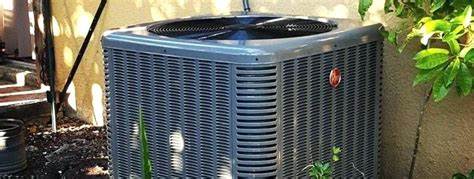A/C 101 - How Central Air Systems WorkPosted by Korn on April 3rd, 2021
Can you imagine life without a/c? Sweltering heat waves that can melt the rubber on your shoes, prepare an egg on the control panel of your vehicle, and make it nearly impossible to have a good night's rest-- sounds unpleasant! Let's face it, life without A/C wouldn't be the exact same. Did you understand, that before the 20th century, ice was in fact harvested for refrigeration? It was cut into 1-ton blocks, provided throughout the country and used in 'ice-boxes' to keep food fresh. Thankfully today, refrigeration has been dramatically improved considering that its intro in 1834. By understanding how your home's A/C system works, you'll have the ability to make it run better and longer, and if it must break during the pet dog days of summer season, more positive discovering a replacement. What is Central Air Conditioning? Considering that the 1960s, main air conditioning systems have actually been the most typical style of cooling in America. Best characterized by the condenser system outside and ducts carrying cool air throughout the house, a central air is often referred to as a "split-system" because the indoor and outdoor components are separated. How It Works Comparable to how a sponge soaks up water, central air conditioners absorb the heat from inside the home and eject it outside through a process called "the refrigeration cycle." It's easy to understand how an a/c unit works when you see how the parts operate together. Parts of an Air Conditioning System Divide into two parts; a system will consist of an outside condenser system (listed below) and a coil housed on top of the heater or inside air handler. The outdoor condenser, which does the majority of the work, operates in tandem with the air handler/furnace that disperses the conditioned air into rooms of your house. The Refrigeration Cycle The cooling process begins when the thermostat detects the interior temperature has actually risen above the setpoint. It indicates the control board in the air handler and enters into action. 1) The internal blower attracts the hot, wet indoor air from the return ducts into the air handler/furnace cabinet to be conditioned. 2) Filthy air entering the cabinet first travels through an air filter that traps dirt and particles. 3) The clean air then passes through the evaporator coil. Utilizing metal fins to increase its area, the evaporator coil extracts heat and moisture from the warm air as the air travels through it. The clean, cool air is distributed throughout the house. 4) A set of copper tubes consisting of refrigerant, called a Line Set, link the indoor coil with the outdoor condenser. 5) The air conditioning repair edmonton condenser dissipates the heat caught inside the line originating from the evaporator coil by biking it through its coils where a fan on top presses air to accelerate the process. The refrigerant is then compressed and takes a trip back to the indoor evaporator coil, where the cooling procedure continues. A/C Cheat Sheet It's a great concept to familiarize yourself with the technical language utilized by HEATING AND COOLING experts to understand your system when it concerns making repairs or buying a new system. A/C - Represents heating, ventilation, and air conditioning. This acronym is used to classify all equipment utilized to manage air temperature, humidity, and air quality. Split-System - In recommendation to parts of the system operating both indoors and outdoors. In a split system, the condensing unit is found outside. BTU - British Thermal Systems - a measurement of how much heat energy can be eliminated from the air in an hour. Ton - A measurement that refers to the cooling capacity your system can offer under typical conditions. 1 Lot is equal to approximately 12,000 BTU's. Tons are frequently used when sizing a system for your home, which can be figured out based on the square video footage required to be cooled or heated up. Unrivaled Expertise Easily, the furnace, a/c, and electrical systems all work instantly, without us needing to fumble around in the basement or worse, a hot attic. Up until something fails. Knowing about your a/c system may seem frustrating initially, however when you have the basics down, you'll have the ability to comprehend not just how your system works, but likewise understand jargon to make buying a replacement simple. Like it? Share it! |



